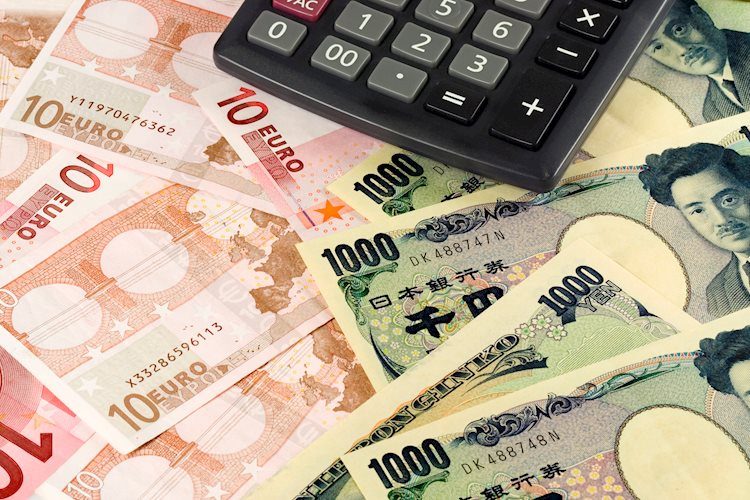The EUR/JPY cross is currently trading around 165.75 in Wednesday’s early European session. The Euro is facing selling pressure due to market expectations of the European Central Bank (ECB) cutting its Deposit Facility Rate again this year. Despite this, the overall outlook for EUR/JPY remains positive, with the cross holding above the key 100-period Exponential Moving Average (EMA) on the 4-hour chart. The Relative Strength Index (RSI) is also supportive of the bullish momentum, standing above the midline near 62.20. The first resistance level for the cross is at 166.00-166.10, with further resistance at 166.55 and 167.95. On the downside, the initial support level is seen at 165.16, with additional support at 164.32 and 164.06.
The Euro is the currency used in the 19 European Union countries that form the Eurozone. It is the second most traded currency in the world after the US Dollar, with an average daily turnover of over $2.2 trillion in 2022. The Euro is also a part of the most traded currency pairs, with EUR/USD being the most popular, followed by EUR/JPY, EUR/GBP, and EUR/AUD. The European Central Bank (ECB) in Frankfurt, Germany, is responsible for setting interest rates and managing monetary policy for the Eurozone. The ECB aims to maintain price stability by controlling inflation or stimulating growth through its monetary policy decisions. Inflation data, economic indicators, and trade balance numbers are key factors that impact the Euro’s performance in the foreign exchange market.
The ECB Governing Council, comprised of heads of Eurozone national banks and six permanent members including the ECB President, Christine Lagarde, makes monetary policy decisions at meetings held eight times a year. The Council’s decisions on interest rates have a direct impact on the value of the Euro. High interest rates or the expectation of higher rates can benefit the Euro, while low rates can weaken the currency. Eurozone inflation data, measured by the Harmonized Index of Consumer Prices (HICP), is closely monitored by the ECB and market participants as it influences monetary policy decisions. Any unexpected changes in inflation levels can lead to shifts in interest rates and affect the value of the Euro.
Economic data releases, such as GDP, Manufacturing and Services PMIs, employment figures, and consumer sentiment surveys, provide insights into the health of the Eurozone economy. Strong economic data is generally positive for the Euro, attracting foreign investment and potentially leading to interest rate hikes by the ECB. Conversely, weak economic data can weigh on the Euro’s performance. The economies of the four largest Eurozone countries – Germany, France, Italy, and Spain – have a significant impact on the overall performance of the Euro. Additionally, the Trade Balance, which measures a country’s exports and imports, is an important indicator for the Euro. A positive trade balance strengthens a currency, while a negative balance can weaken it.
In conclusion, the EUR/JPY cross is currently trading lower around 165.75, with the Euro facing selling pressure amid expectations of an ECB rate cut. Despite this, the overall outlook for the cross remains positive, supported by the 100-period EMA and bullish RSI indicator. The first resistance level for EUR/JPY is at 166.00-166.10, with support seen at 165.16 and further levels at 164.32 and 164.06. The Euro, as the currency of the Eurozone, is influenced by ECB monetary policy decisions, inflation data, economic indicators, and trade balance numbers. Market participants closely monitor these factors to gauge the performance of the Euro in the foreign exchange market. Economic data releases and developments in the Eurozone economy play a crucial role in determining the direction of the Euro and its impact on currency pairs like EUR/JPY.

















































